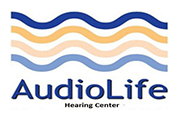
Is your hearing protection failing to protect your hearing? Here are 3 things to look out for.
Whether you’re at home or at work, sometimes you come across something that can interfere with the effectiveness of your hearing protection. And that can be discouraging. You’re trying to do the right thing after all. You use your earmuffs every day at work; you use earplugs when you attend a concert; and you avoid your raucous Uncle Joe who is always yelling in your ears (although, maybe you just don’t really like Uncle Joe).
Here’s the point, when you’re doing everything right but you’re still having problems, it can be discouraging. Fortunately, you can take some steps to protect yourself once you learn what kinds of things can interfere with the performance of your hearing protection. And that can ensure that your ear protection functions at peak efficiency even when you have some obstacles.
1. Wearing The Wrong Kind of Ear Protection
Hearing protection is available in two standard kinds: earplugs and earmuffs. As the names may suggest, earplugs are small and can be pushed directly inside the ear canal. Earmuffs look like a set of 70’s headphones, but instead of music, they provide protection for your hearing by muting outside sound.
- When you’re in a setting where noise is relatively constant, earplugs are recommended.
- When loud sounds are more intermittent, earmuffs are recommended.
There’s a simple explanation for that: when there’s no noise, you’ll want to remove you’re hearing protection which is harder to do with earplugs than earmuffs. Earplugs are very easy to lose (particularly if they’re cheap and disposable anyway), so you don’t want to be in a position where you remove an earplug, lose it, and then need it later.
You will be okay if you wear the correct protection in the right scenario.
2. Your Anatomy Can Affect Your Ear Protection
There are many variables in human anatomy from one individual to another. That’s why your Uncle Joe has such large vocal cords and you have more normal-sized vocal cords. That’s also why you may have a smaller than average ear canal.
This can cause complications with your ear protection. Disposable hearing protection is frequently a one size fits all mentality, or at best, a small, medium, large situation. And so if you have particularly tiny ear canals, you may have a hard time making earplugs fit, causing you to give up completely and in frustration, throw them away..
This can leave you exposed to risk, undercutting the hearing protection you were attempting to provide for yourself. Another example of this is individuals with large ears who frequently have a difficult time getting earmuffs to fit comfortably. For people who work in noisy environments, a custom fit pair of ear protection is a good investment.
3. Assess Your Hearing Protection For Signs of Wear
If you’re wearing your hearing protection every day, you should give yourself a pat on the back. But that also means you need to monitor the wear and tear your ear protection is experiencing.
- Replace cushions on earmuffs from time to time (typically, when those cushions aren’t pliable, they’re ready to be replaced).
- Examine the band on earmuff protection. The band will need to be replaced if the elastic is worn out and no longer holds the earmuffs tight.
- Clean your hearing protection. Ears aren’t exactly the cleanest part of your body (ear wax serves a practical purpose and all, but it’s still kind of… gross). Make certain you wash your hearing protection completely by taking them apart before you clean them. If you’re rinsing earplugs, don’t drop them down the drain.
If you want to get maximum benefit, you need to do routine maintenance on your hearing protection. It’s important that you have a consultation with us if you have any questions on how to take care of your hearing protection or want to know more about the things that can impede their performance.
You need your hearing. Taking the time to protect it properly is essential.
